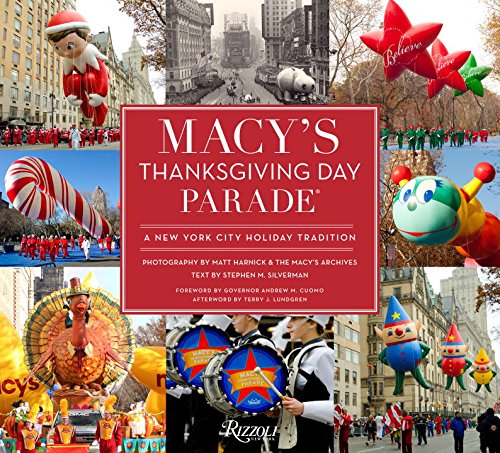
77th St. & Central Park West to 34th St. & Seventh Ave.
Thursday, November 24, free, 9:00 am – 12 noon
212-494-4495
www.rizzolibookstore.com
social.macys.com
In 1924, a bunch of Macy’s employees joined forces and held the first Macy’s Christmas Parade, as it was then known. This year Macy’s celebrates the ninetieth edition of this beloved American event — for those of you going crazy trying to figure out how 1924 to 2016 makes 90, the parade was canceled from 1942 through 1944 because of World War II — with the publication of Macy’s Thanksgiving Day Parade: A New York City Holiday Tradition (Rizzoli, August 2016, $29.95). “This iconic and truly American event started on the streets of New York City in 1924 as a way for New York’s largely immigrant workforce employed at Macy’s department store to celebrate our national day of Thanksgiving in a manner befitting the customs of their native lands,” Governor Andrew Cuomo writes in the foreword. “Today, no other holiday event can match its large-scale pageantry, diversity, and place in pop culture. It could only have been created in New York.” The oversized hardcover features nearly two hundred photographs by Matt Harnick and the Macy’s Archives that reveal the before, during, and after of the parade through the decades, in color and black-and-white, from shots of the balloon creation in New Jersey to pictures of beloved characters marching down Fifth Ave. “Actual preparation for each year’s parade takes approximately eighteen months, with the construction of an individual float requiring anywhere from four to six months,” Stephen H. Silverman notes in his behind-the-scenes essay that introduces readers to many of the people responsible for making things happen, from sketching and designing balloons to arranging the celebrity list to dismantling floats once the parade is over.
“Most often the parade adequately reflects what is going on in American mass culture, news, and entertainment at the time,” parade executive producer Amy Kule tells Silverman. “We try to be nimble. What we can’t be is too cool or fashion-forward.” The 2016 lineup, which cannot be accused of being too cool or fashion-forward, features such giant balloons as Hello Kitty, Pillsbury Doughboy, and Charlie Brown, such floats as 1-2-3 Sesame Street, Mount Rushmore’s American Pride, and Cracker Jack’s At the Ball Game, and such performers as De la Soul, Fitz and the Tantrums, Regina Spektor, Tony Bennett, and Sara McLachlan. To get a start on the parade, head on over to Central Park West and Columbus Ave. between 77th & 81st Sts. the day before, November 23, from approximately 3:00 to 10:00 to check out the Big Balloon Blow-up.
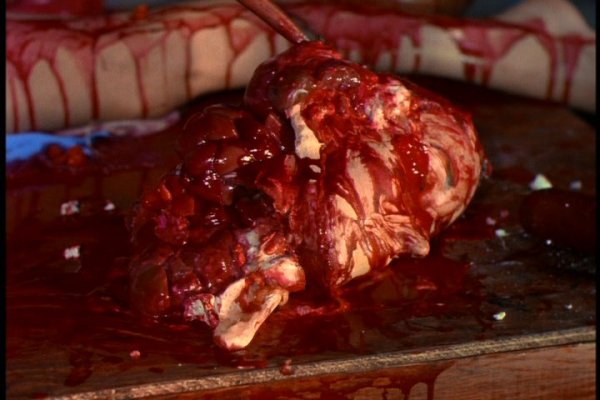
 We have a bone to pick with Nitehawk Cinema. One of the Brooklyn movie house’s signature series is “Film Feast,” in which they invite chefs to serve specially created meals for specific films, inspired by what’s happening onscreen; for example, on December 13, Richard Donner’s Scrooged, starring Bill Murray, will be shown with a gourmet menu that includes courses named “The Night the Reindeer Died” and “Buy Me a Goose.” So what is Blood Feast, chopped liver? How could this cult classic, widely considered the first splatter horror movie ever made, not make it into the “Film Feast” series? On November 25 and 26 just past midnight, Nitehawk is presenting a 35mm print of Herschell Gordon Lewis’s low-budget, somewhat tongue-in-cheek (or, as you’ll see, tongue-out-of-cheek) gorefest, which stars Lewis regular Mal Arnold (Scum of the Earth!, the nudie musical Goldilocks and the Three Bares) as Fuad Ramses, the limping owner of an “exotic” food store and catering business. Oh, he’s also a homicidal maniac. When the high-falutin’ Mrs. Dorothy Fremont (Lyn Bolton) asks him to cater a party she is throwing for her daughter, Suzette (Connie Mason of Lewis’s 2000 Maniacs), Ramses, who has been killing and cutting up women, sees it as the opportunity he’s been waiting for, to serve an Egyptian feast for the first time in five thousand years in order to bring the goddess Ishtar, Mother of the Veiled Darkness, back to life. (Yes, Ishtar; we’re not kidding.) Meanwhile, Miami detective Pete Thornton (longtime character actor and writer William Kerwin) and the dimwitted police captain (Scott H. Hall) are on the case — well, sort of, as they’re not exactly the brightest bulbs when it comes to putting two and two together. Nor is Suzette, who offers up this lulu: “I was reading about all those murders, and it sort of takes all the joy out of everything.”
We have a bone to pick with Nitehawk Cinema. One of the Brooklyn movie house’s signature series is “Film Feast,” in which they invite chefs to serve specially created meals for specific films, inspired by what’s happening onscreen; for example, on December 13, Richard Donner’s Scrooged, starring Bill Murray, will be shown with a gourmet menu that includes courses named “The Night the Reindeer Died” and “Buy Me a Goose.” So what is Blood Feast, chopped liver? How could this cult classic, widely considered the first splatter horror movie ever made, not make it into the “Film Feast” series? On November 25 and 26 just past midnight, Nitehawk is presenting a 35mm print of Herschell Gordon Lewis’s low-budget, somewhat tongue-in-cheek (or, as you’ll see, tongue-out-of-cheek) gorefest, which stars Lewis regular Mal Arnold (Scum of the Earth!, the nudie musical Goldilocks and the Three Bares) as Fuad Ramses, the limping owner of an “exotic” food store and catering business. Oh, he’s also a homicidal maniac. When the high-falutin’ Mrs. Dorothy Fremont (Lyn Bolton) asks him to cater a party she is throwing for her daughter, Suzette (Connie Mason of Lewis’s 2000 Maniacs), Ramses, who has been killing and cutting up women, sees it as the opportunity he’s been waiting for, to serve an Egyptian feast for the first time in five thousand years in order to bring the goddess Ishtar, Mother of the Veiled Darkness, back to life. (Yes, Ishtar; we’re not kidding.) Meanwhile, Miami detective Pete Thornton (longtime character actor and writer William Kerwin) and the dimwitted police captain (Scott H. Hall) are on the case — well, sort of, as they’re not exactly the brightest bulbs when it comes to putting two and two together. Nor is Suzette, who offers up this lulu: “I was reading about all those murders, and it sort of takes all the joy out of everything.”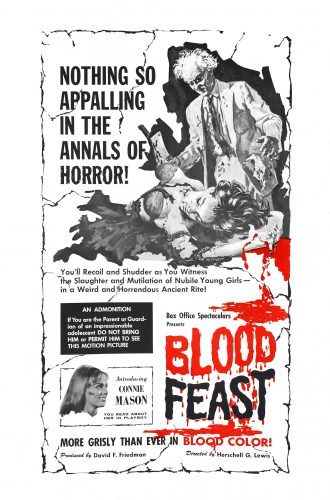
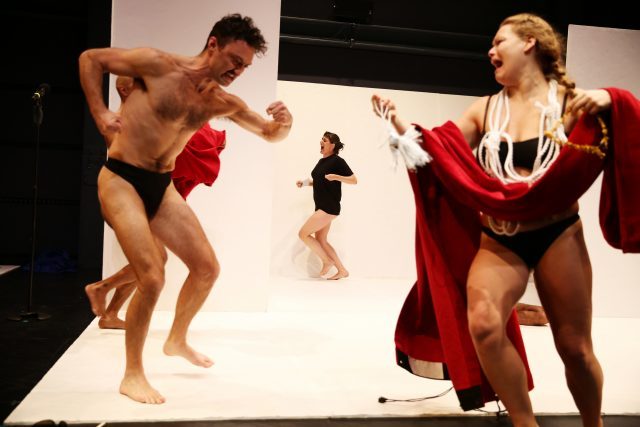
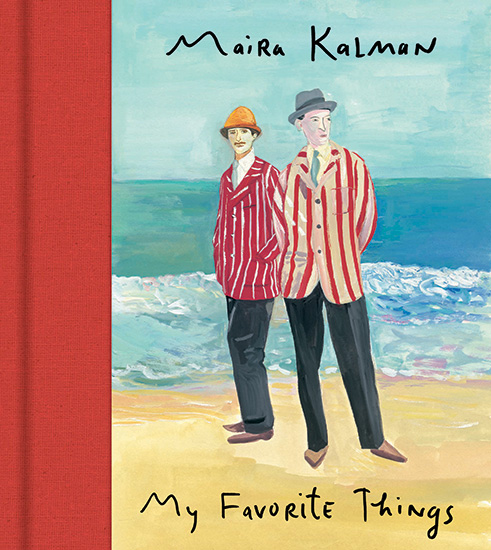
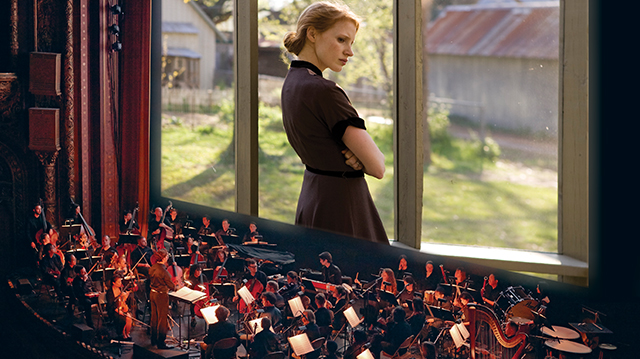
 Iconoclastic writer-director Terrence Malick had made only five feature films in his forty-plus-year career when The Tree of Life came out in 2011, and it might very well be his best. And now you can see it like never before, as the BAM Next Wave Festival presents it in the Howard Gilman Opera House with a live score performed by more than one hundred singers and musicians from New York City’s Wordless Music Orchestra playing works by Mahler, Berlioz, Brahms, Górecki, Mozart, Tavener, Smetana, Couperin, and others, conducted by Ryan McAdams and featuring Robert Fleitz on piano and sopranos Charles Love and Jennifer Zetlan. Following Badlands (1973), Days of Heaven (1978), The Thin Red Line (1998), and The New World (2005), The Tree of Life is an epic masterpiece of massive proportions, a stirring visual journey into the beginning of the universe, the end of the world, and beyond. The unconventional nonlinear narrative essentially tells the story of a middle-class Texas family having a difficult time coming to grips with the death of one of their sons in the military. Malick cuts between long flashbacks of Mr. and Mrs. O’Brien (Brad Pitt and Jessica Chastain) in the 1950s and 1960s, as they meet, marry, and raise their three boys, to the present, when Jack (Sean Penn), their eldest, now a successful architect, is still searching for answers. The sets by production designer Jack Fisk transport viewers from midcentury suburbia to the modern-day big city and a heavenly beach, all gorgeously shot by cinematographer Emmanuel Lubezki. Every frame is so beautiful, it’s as if they filmed the movie only at sunrise and sunset, the Golden Hour, when the light is at its most pure. The Tree of Life is about God and not God, about faith and belief, about evolution and creationism, about religion and the scientific world. The film opens with a quote from the Book of Job: “Where were you when I laid the earth’s foundation . . . while the morning stars sang together and all the sons of God shouted for joy?” Early on, Mrs. O’Brien says in voice-over, “The nuns taught us there are two ways through life: The way of nature, and the way of grace. You have to choose which one to follow.” Malick leaves those questions open, displaying the miracles of life and death and everything in between as perhaps the only response.
Iconoclastic writer-director Terrence Malick had made only five feature films in his forty-plus-year career when The Tree of Life came out in 2011, and it might very well be his best. And now you can see it like never before, as the BAM Next Wave Festival presents it in the Howard Gilman Opera House with a live score performed by more than one hundred singers and musicians from New York City’s Wordless Music Orchestra playing works by Mahler, Berlioz, Brahms, Górecki, Mozart, Tavener, Smetana, Couperin, and others, conducted by Ryan McAdams and featuring Robert Fleitz on piano and sopranos Charles Love and Jennifer Zetlan. Following Badlands (1973), Days of Heaven (1978), The Thin Red Line (1998), and The New World (2005), The Tree of Life is an epic masterpiece of massive proportions, a stirring visual journey into the beginning of the universe, the end of the world, and beyond. The unconventional nonlinear narrative essentially tells the story of a middle-class Texas family having a difficult time coming to grips with the death of one of their sons in the military. Malick cuts between long flashbacks of Mr. and Mrs. O’Brien (Brad Pitt and Jessica Chastain) in the 1950s and 1960s, as they meet, marry, and raise their three boys, to the present, when Jack (Sean Penn), their eldest, now a successful architect, is still searching for answers. The sets by production designer Jack Fisk transport viewers from midcentury suburbia to the modern-day big city and a heavenly beach, all gorgeously shot by cinematographer Emmanuel Lubezki. Every frame is so beautiful, it’s as if they filmed the movie only at sunrise and sunset, the Golden Hour, when the light is at its most pure. The Tree of Life is about God and not God, about faith and belief, about evolution and creationism, about religion and the scientific world. The film opens with a quote from the Book of Job: “Where were you when I laid the earth’s foundation . . . while the morning stars sang together and all the sons of God shouted for joy?” Early on, Mrs. O’Brien says in voice-over, “The nuns taught us there are two ways through life: The way of nature, and the way of grace. You have to choose which one to follow.” Malick leaves those questions open, displaying the miracles of life and death and everything in between as perhaps the only response.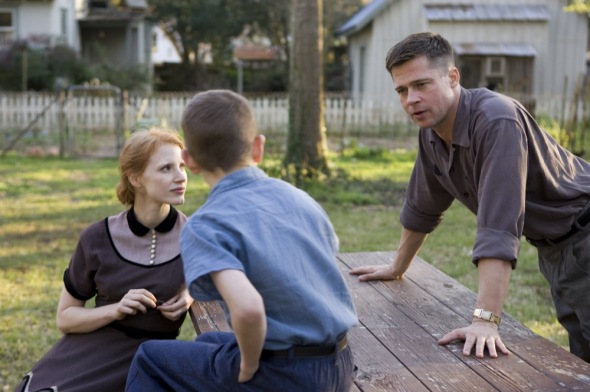

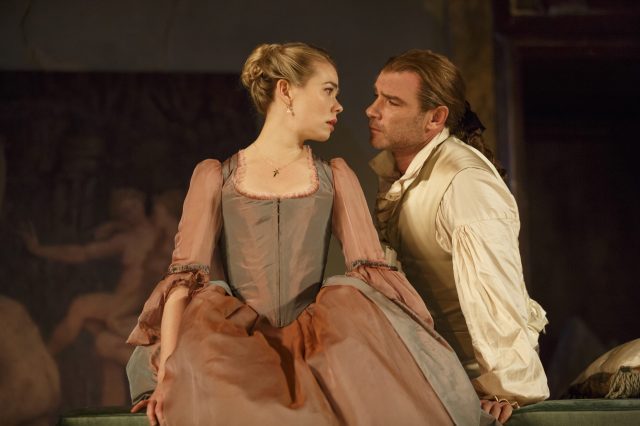

 You will never hear us complaining about too much Isabelle Huppert. The sixty-three-year-old French actress has been all over the place recently, having appeared in no fewer than seven films in 2015–16 in addition to touring the world in Krzysztof Warlikowski’s Phèdre(s), which came to BAM this past September, and appearing with Cate Blanchett in Jean Genet’s The Maids at City Center in 2014. In conjunction with the release of her latest two films, Mia Hansen-Løve’s Things to Come and Paul Verhoeven’s Elle, Metrograph is hosting a seven-movie Huppert retrospective this weekend, with the grand actress on hand on the Lower East Side for a Q&A following Hong Sang-soo’s In Another Country and to introduce Curtis Hanson’s L.A. Confidential. The series also includes Michael Haneke’s The Piano Teacher, Catherine Breillat’s Abuse of Weakness, Hal Hartley’s Amateur, and Ursula Maier’s Hom. as well as Claire Denis’s White Material, which takes place in an unnamed West African nation besieged by a bloody civil war between rebels and the military government. Huppert stars as Maria Vial, who steadfastly refuses to leave her coffee plantation, determined to see the last crop through to fruition. Despite pleas from the French army, which is vacating the country; her ex-husband, André (Christophe Lambert), who is attempting to sell the plantation out from under her; and her workers, whose lives are in danger, Maria is unwilling to give up her home and way of life, apparently blind to what is going on all around her.
You will never hear us complaining about too much Isabelle Huppert. The sixty-three-year-old French actress has been all over the place recently, having appeared in no fewer than seven films in 2015–16 in addition to touring the world in Krzysztof Warlikowski’s Phèdre(s), which came to BAM this past September, and appearing with Cate Blanchett in Jean Genet’s The Maids at City Center in 2014. In conjunction with the release of her latest two films, Mia Hansen-Løve’s Things to Come and Paul Verhoeven’s Elle, Metrograph is hosting a seven-movie Huppert retrospective this weekend, with the grand actress on hand on the Lower East Side for a Q&A following Hong Sang-soo’s In Another Country and to introduce Curtis Hanson’s L.A. Confidential. The series also includes Michael Haneke’s The Piano Teacher, Catherine Breillat’s Abuse of Weakness, Hal Hartley’s Amateur, and Ursula Maier’s Hom. as well as Claire Denis’s White Material, which takes place in an unnamed West African nation besieged by a bloody civil war between rebels and the military government. Huppert stars as Maria Vial, who steadfastly refuses to leave her coffee plantation, determined to see the last crop through to fruition. Despite pleas from the French army, which is vacating the country; her ex-husband, André (Christophe Lambert), who is attempting to sell the plantation out from under her; and her workers, whose lives are in danger, Maria is unwilling to give up her home and way of life, apparently blind to what is going on all around her.